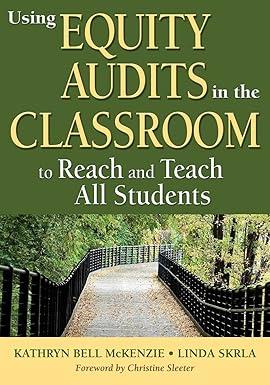Question
CASE 4-27 Critical Thinking; Interpretation of Manufacturing Overhead Rates [LO4-1, LO4-2] Sharpton Fabricators Corporation manufactures a variety of parts for the automotive industry. The company
CASE 4-27 Critical Thinking; Interpretation of Manufacturing Overhead Rates [LO4-1, LO4-2]
Sharpton Fabricators Corporation manufactures a variety of parts for the automotive industry. The company uses a job-order costing system with a plant wide predetermined overhead rate based on direct labor-hours. On December 10, 2015, the company's controller made a preliminary estimate of the predetermined overhead rate for 2016. The new rate was based on the estimated total manufacturing overhead cost of $2,475,000 and the estimated 52,000 total direct labor-hours for 2016:
Predetermined overhead rate = $2,475,000 52,000 hours = $47.60 per direct labor-hour
This new predetermined overhead rate was communicated to top managers in a meeting on December 11. The rate did not cause ay comment because it was within a few pennies of the overhead rate that had been used during 2015. One of the subjects discussed at the meeting was a proposal by the production manager to purchase an automated milling machine built by Central Robotics. The president of Sharpton Fabricators, Kevin Reynolds, agreed to meet with the regional sales representative from Central Robotics to discuss the proposal.
Reynolds: Larry Winter, our production manager, asked me to meet with you because he is interested in installing an automated milling machine. Frankly, I am skeptical. You're going to have to show me this isn't just another expensive toy for Larry's people to play with. Warner: That shouldn't be too difficult, Mr. Reynolds. The automated milling machine has three major advantages. First, it is much faster than the manual methods you are using. It can process about twice as many parts per hour as your present milling machines. Second, it is much more flexible. There are some-up front programming costs, but once those have been incurred, almost no setup is required on the machines for standard operations. You just punch in the code of the standard operation load the machine's hopper with raw material, and the machine does the rest. Reynolds: Yeah, but what about cost? Having twice the capacity in the milling machine area won't do us much good. That center is idle much of the time anyway. Warner: I was getting there. The third advantage of the automated milling machine is lower cost. Larry Winters and I looked over your present operations, and we estimated that the automated equipment would eliminate the need for about 6,000 direct labor-hours a year. What is your direct labor cost per hour? Reynolds: The wage rate in the milling area averages about $21 per hour. Fringe benefits raise that figure to about $30 per hour. Warner: Don't forget your overhead. Reynolds: Next year the overhead rate will be about $48 per hour. Warner: So including fringe benefits and overhead, the cost per direct labor-hour is about $78. Reynolds: That's right. Warner: Since you save 6,000 direct labor-hours per year, the cost savings would amount to about $468,000 a year. Reynolds: That's pretty impressive, but you aren't giving away this equipment are you? Warner: Several options are available, including leasing and outright purchase. Just for comparison purposes, our 60-month lease plan would require payments of only $300,000 per year. Reynolds: Sold! When can you install the equipment?
Shortly after this meeting, Mr. Reynolds informed the company's controller of the decision to lease the new equipment, which would be installed over the Christmas vacation period. The controller realized that the decision would require a recomputation of the predetermined overhead rate for the year 2016 since the decision would affect both the manufacturing overhead and the direct labor-hours for the year. After talking with both the production manager and the sales representative from Central Robotics, the controller discovered that in addition to the annual lease cost of $300,000, the new machine would also require a skilled technician/programmer who would have to be hired at the cost of $45,000 per year to maintain and program the equipment. Both of these costs would be included in factory overhead. There would be no other changes in total manufacturing overhead cost, which is almost entirely fixed. The controller assumed that the new machine would result in a reduction of 6,000 direct labor0hours for the year from the levels that had initially been planned.
When the revised predetermined overhead rate for the year 2016 was circulated among the company's top managers, there was considerable dismay.
Required: 1. Recompute the predetermined overhead rate assuming that the new machine will be installed. Explain why the new predetermined overhead rate is higher (or lower) than the rate that was originally estimated for the year 2016. 2. What effect (if any) would this new rate have on the cost of jobs that do not use the new automated milling machine? 3. Why would managers be concerned about the new overhead rate? 4. After seeing the new predetermined overhead rate, the production manager admitted that he probably wouldn't be able to eliminate all the 6,000 direct labor-hours. He had been hoping to accomplish the reduction by not replacing workers who retire or quit, but they would not be possible. AS a result, the real labor savings would be only about 2,000 hoursone worker. Given this additional information, evaluate the original decision to acquire the automated milling machine from Central Robotics.
Step by Step Solution
There are 3 Steps involved in it
Step: 1

Get Instant Access to Expert-Tailored Solutions
See step-by-step solutions with expert insights and AI powered tools for academic success
Step: 2

Step: 3

Ace Your Homework with AI
Get the answers you need in no time with our AI-driven, step-by-step assistance
Get Started


